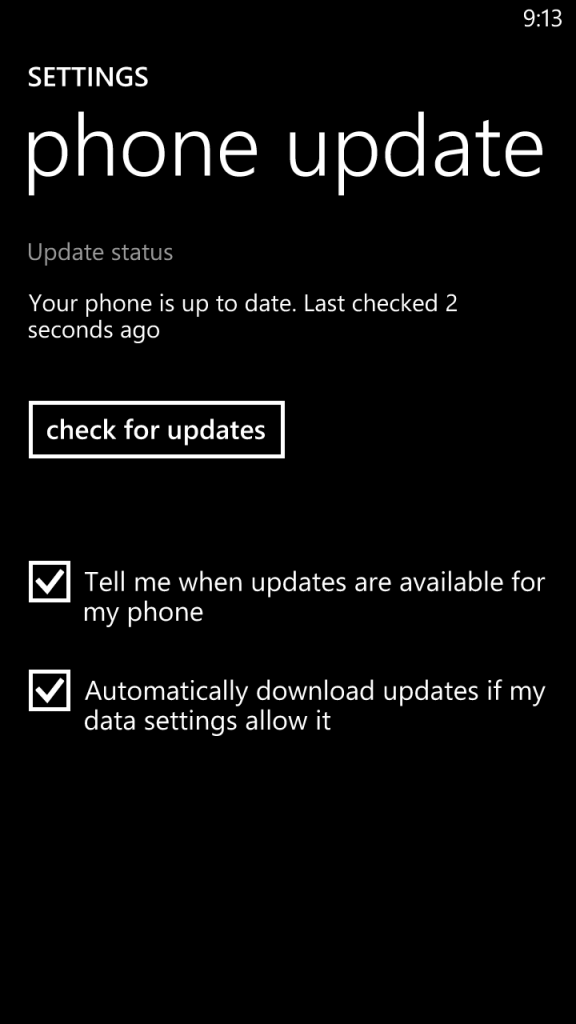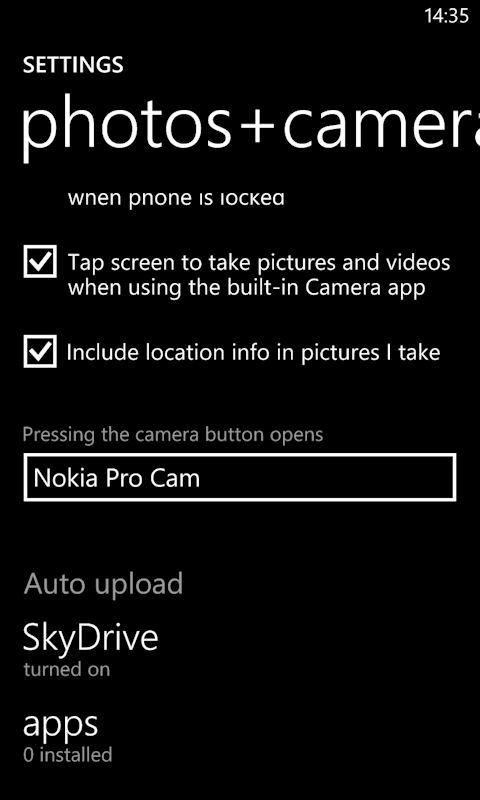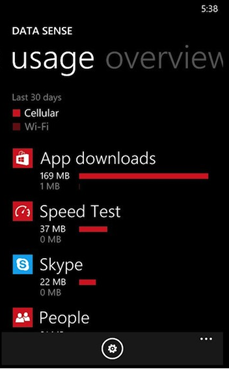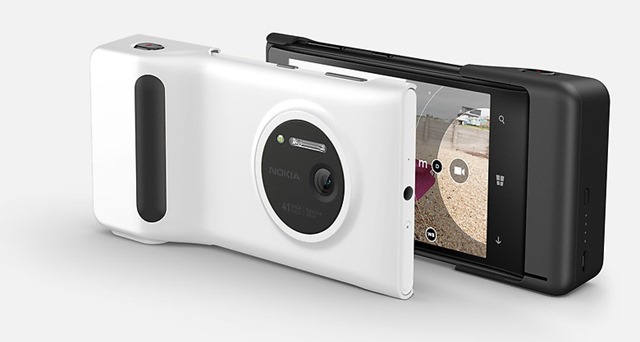Your Windows Phone is getting a little present.
You’ve probably heard that we’re rolling out a new update to Windows Phone 8. First announced in May and unofficially known by its internal shorthand, GDR2, the update has been trickling out to existing Windows Phone 8 smartphones for several weeks.
Now things are starting to pick up steam. Last week the HTC Windows Phone 8X on AT&T and the Nokia Lumia 928 on Verizon Wireless started receiving it. Today, Lumia 822 owners on Verizon will start seeing update notifications. (On top of our update, some Lumia models are also getting a companion upgrade from Nokia called “Amber,” which you can read more about here.)
We always publish a brief description of official Microsoft updates for Windows Phone. But I’ve seen a bunch of questions and some confusion around this latest one on Twitter and in forums. Now that more folks are beginning to get it, I thought it would be a good time to recap what’s in our latest update and what it means for you.

New features
So what’s in this thing? The software updates we push out between major releases are primarily designed to make existing Windows Phone 8 features work better, bring Windows Phone to new carriers like Sprint and China Mobile, and enable cutting-edge new devices like the Nokia Lumia 1020. But we still try to squeeze in some fun extras, too.
For example, our first official Windows Phone 8 update released earlier this year included handy upgrades like the ability to reply to an incoming call with a text. Depending on your phone model and carrier, here’s what’s coming in the latest update:
Data Sense
As the era of unlimited cellular data plans fades, it’s more important than ever to be smart about how you use your smartphone. That’s where Data Sense comes in. The feature—previously available only to Verizon Wireless customers—helps you stay on top of your phone’s data usage (including keeping track of which apps use the most data) and set a limit based on your data plan. Data Sense also has the ability to compress web page data as you browse, so you can surf up to 45 percent more on the same data plan with the feature turned on. How to use Data Sense.
The new update brings Data Sense support to more Windows Phones, and last I heard a number of carriers around the world were planning to offer it on their networks.
FM Radio
Did you know Windows Phone can double as a portable radio? By popular request, we’ve brought back the FM radio feature from Windows Phone 7. To use it, tap Music + Videos, then flick to Collection. Not all Windows Phones support FM radio. But if yours does, you’ll see the Radio menu option here after you’ve installed the new update. How to use FM radio.
Camera
The update includes several tweaks that will please photographers. It improves what you see when zooming in on high-res photos in the viewfinder. On certain phone models, you also now have the option of changing which photo app opens when you press the Camera button. For example, on the Nokia Lumia 1020, you now have the choice of using the Camera button to launch the Nokia Pro Camera app or Microsoft’s default Camera app (Nokia’s new Amber update also brings this option to the Lumia 920 and other models.)
If it’s available on your phone, you’ll find this new option under Settings > Applications > Photos + camera.

Voicemail, Group messaging
Do you get voicemail messages delivered as email attachments? In this update we added support for additional audio codecs so messages sent as .wav files play correctly.
There’s also new support for group messaging on Verizon Wireless. So when you text a bunch of people you can keep replies on one thread. To turn this option on, go to Settings > Applications > Messaging. Learn more.
Fixes & Improvements
The team made a slew of bug fixes and improvements in this update—especially around phone storage and music—so I thought it’d be worth digging into the details. Here’s a closer look:
Google support
With this new update, Windows Phone 8 now supports connecting to Google services via the CalDAV and CardDAV protocols. For most people, this just means that Gmail and other popular Google services will just keep working on your phone exactly as you’d expect. For more background on this, see my blog post from earlier this year.
“Other” storage
Curious what’s taking up space on your phone? Go to Settings>Phone Storage and tap the colored bar. You’ll see a categorized list, including one called “Other.” Some people understandably find this one a bit mysterious. Like the name suggests, it’s a catch-all for temporary operating system files, e-mail attachments, app or game info, and other digital ephemera.
The problem is that some customers were seeing this space fill up until there was no more free space left.
The new update helps ease this space crunch and reclaim space on your phone. When phone storage fills up, Windows Phone automatically starts winnowing the size of Other down to essential files like mail attachments and app data. The operating system still needs this area as a temporary storage bin, so it’s unlikely you’ll ever see Other completely empty, but it should no longer block you from downloading apps or updates (unless you go crazy with tons of gigantic email attachments).
Xbox Music
A big chunk of the work in the latest update was devoted to making music better on your phone.
For starters, we made several improvements in how Windows Phone works with your Xbox Music cloud collection.
- We fixed a bug that caused duplicate songs to appear on phones when users copied over a song from their PC that also exists in their cloud collection. (To remove existing dupes on your phone, you’ll need to update your PC companion app, then delete and resync your music. Learn more.)
- We now sync cloud collection to the Music+Videos Hub more frequently, so tweaks you make on the PC are reflected more quickly on the phone.
- We made it easier to select multiple—or all songs—from cloud-based playlists and download them to your phone
After installing the update, you’ll notice fewer instances of the wrong album art showing up and albums accidentally getting split into two on your phone. (To fix existing album art mistakes, you’ll need to delete and resync the albums on your phone. Learn more.)
We’ve also taken steps so artists, songs, or albums metadata doesn’t inadvertently get overwritten. Now we look up and add metadata to your music only if a synced track is missing key info.
There’s more. We addressed issues that were preventing some former Zune Pass and current Xbox Music subscribers from playing copy-protected—aka DRM’d—tracks on their phones.
For those of you that build your playlists using the Music app in Windows 8, it’s now possible to transfer those playlists to your Windows Phone. You’ll need the latest updates for both the Music and Windows Phone app on your Windows 8 PC. Then you just select a playlist, and choose Windows Phone from the Share charm to put it on your phone. (This feature was just turned on this afternoon, so it might take a few hours to start working. Playlist sharing also currently works only on x86-based Windows 8 devices.)
Finally, streamed music is less likely to skip or pause once the update is installed because the phone starts fetching the next track before the current one you’re listening to fades out.
Bluetooth and more
The team fixed plenty of Bluetooth issues in the new update, mostly related to problems with audio cutting out and other quality glitches. Some of these fixes were model-specific and aimed at 2011 Ford F150s, 2012 Range Rovers, and the Porsche Cayenne, just to name a few.
In the miscellaneous category, Skype, Lync and other VoIP (Voice over Internet Protocol) apps should be more stable and perform better. And Internet Explorer has been updated to improve media playback among other things.
New Hardware
One big focus of our updates is laying the groundwork for new technology or making Windows Phone available on more carriers. For example, this new update included plumbing work that made it possible for Sprint to launch the HTC 8XT last month, the carrier’s first Windows Phone 8 smartphone.
We also made several changes to pave the way for groundbreaking new Nokia Windows Phones like the Lumia 1020. As Joe Belfiore pointed out in this recent Q&A, we also improved the zoom capability of our photo viewer so it’s possible to zoom in closer on the 1020’s larger-resolution images and made it possible for Nokia’s new flagship device to capture and save both a 5MP image and a super high-res image simultaneously.
How to get it
So now to the big question: How do you get the new update?
Once the team finishes coding, our software updates are rigorously tested to ensure they work on all the different Windows Phone models and carriers in each country. This takes time. They also frequently get bundled with goodie-filled upgrades from phone makers—Nokia’s Amber release is a good example—a process that can add to delivery times.
Some Windows Phone models such as the Nokia Lumia 925 or 1020 already have the new update preinstalled. To check if your phone has it, follow these steps. If you’ve got the new update, the OS version number will say 8.0.10327.77 or 8.0.10328.78.
Otherwise, just wait until you receive an update notification on your phone. You can also manually check for one by going to Settings > Phone Update and tap Check for update.
What feature or fix are you looking forward to?



